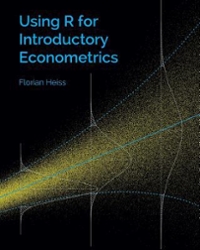Question
1.Profit Maximization with no price discrimination You are running a football program at a large Texas university.Your program has been losing money and you therefore
1.Profit Maximization with no price discrimination
You are running a football program at a large Texas university.Your program has been losing money and you therefore want to work out the profit maximizing price for tickets.You hire a consultant who calculates that you face the following demand curve for season tickets for each game:
Qd(P) = 140,000 - 250P
He notes that you have a very large stadium (92,589) seats that is never filled.He also notes that most of the costs that your football program faces (i.e., wages for staff, equipment and scholarships for players, maintenance for the large stadium) are fixed costs and do not depend on the number of season tickets that you sell.He therefore estimates that your variable cost of selling an additional season ticket is 0. Your total cost function, therefore, is only made up of fixed costs (i.e., salaries for coaching staff, maintenance for the stadium etc.):
TC(Q) = $20,000,000
Given this level of demand and your cost structure listed above:
A. What is the profit maximizing level of output (Q*)
Note:Q* is a round number in thousands. So please round your answer to the nearest 1000
B. What is the price that you charge at the profit maximizing level of output (P*)?
C. Calculate profits at the profit maximizing output level.
2. Own-price elasticity's
Continuing the previous problem, your consultant suggests that you can increase profits through price discrimination.He notes that you can segment your market into students and alumni.He notes that you can make students show their student IDs when they come to the games to prevent on-selling.He therefore suggests that you consider charging students and alumni different prices.
Demand for students is the following:
Qs(Ps) = 80,000 - 200Ps
A. Calculate the elasticity of demand for students at the profit maximizing price?
Demand for alumni is the following:
Qa(Pa) = 60,000 - 50Pa
B. Calculate the elasticity of demand for alumni at the profit maximizing price?
C. A.Based on these elasticity's, if you practice third degree price discrimination, would you expect to charge higher prices to students or alumni if you decide to price discriminate? EXPLAIN
3.Profit Maximization with third-degree price discrimination
Continuing the previous question, work out what profits will be with third degree price discrimination where you charge students and alumni different prices.
For students, demand is: Qs(Ps) = 80,000 - 200Ps
We will divide total costs evenly between students and alumni.Total costs for students are therefore: TC(Q) = $10,000,000
A. What is the profit maximizing level of output (Qs*) for students
Note:Q* is a round number in thousands. So please round your answer to the nearest 1000
B. What is the price that you charge at the profit maximizing level of output (Ps*) for students?
C. Calculate profits that you get from selling tickets to students
Step by Step Solution
There are 3 Steps involved in it
Step: 1

Get Instant Access to Expert-Tailored Solutions
See step-by-step solutions with expert insights and AI powered tools for academic success
Step: 2

Step: 3

Ace Your Homework with AI
Get the answers you need in no time with our AI-driven, step-by-step assistance
Get Started


